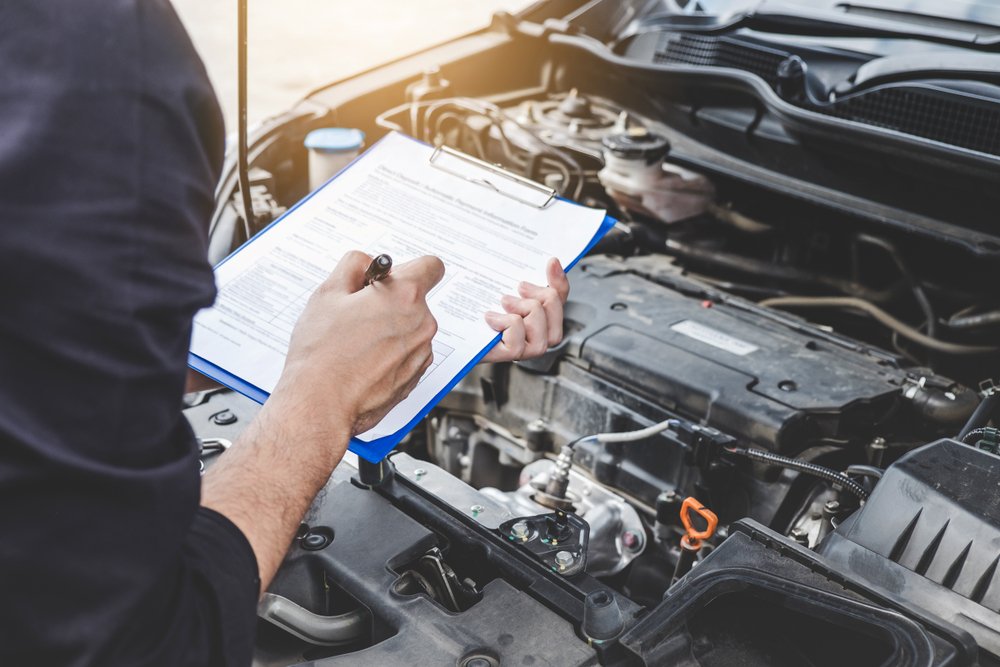Temperatures are on the rise and A/C use is too!
Before we need the air conditioning every day, you should check out your automobiles’ air conditioning system using this checklist. Before we start, I must mention safety. You should ALWAYS use extreme caution when working or even looking under the auto’s hood when the engine is running. Common sense tells us to be safe and be aware of extremely hot parts, but be sure you are just as aware of the dangers of any rotating engine component. Be sure to keep loose clothing and hair a safe distance from these parts. You should also use protective eye-wear when performing this inspection.
Checking the compressor clutch for proper engagement:
With the car running, the compressor clutch should engage when the A/C is turned on. If it fails to do so, you may have either an empty or very low refrigerant or an electrical issue. If you happen to hear a fast clicking sound or cyclic noise coming from the compressor it may also indicate low refrigerant among other things. If you are experiencing any of these kinds of problems, it is advised that you take your car or truck to a reputable mechanic or auto repair shop to have the A/C inspected and serviced.
Is the air cold enough?
If the A/C isn’t producing cold enough air, you likely have an issue with refrigerant. While there are pressure gauges that you can use to assess your refrigerant level, you may have to take your auto to a car care center that can add refrigerant. You may also want to have the A/C system looked over by a professional to determine why your refrigerant level was low. If you have a leak, adding more will only fix the problem temporarily if at all.
Checking hardware and the compressor clutch
This is pretty simple to check. When the car is on but the A/C switch is off, do you hear noises around the compressor? If you hear rumbling or knocking types of noise coming from the compressor area it may indicate a compressor clutch that is going bad. These noises could also point to mounting hardware that has come loose and needs to be tightened.
Check mounting bolts and other hardware:
Even if you aren’t hearing noise coming from them, all mounting hardware should be checked. It is important that you make sure all of the mounting bolts are adequately secured and that there are no other parts that have loosened or may be rattling.
Check your A/C service ports:
You should inspect the A/C system service ports to make sure the caps are installed. In addition to sealing in the refrigerant, these service port caps keep dirt and other debris from making their way into the A/C system.
Checking your A/C belts:
With the engine running and the A/C switched on, check that the belts do not vibrate. If any of them do, you’ll need to determine if the belt needs to be tightened or if you have a faulty automatic belt tensioner. You should also visually inspect all of your belts for wear and tear, cracks and glazing. If any of them show signs of deterioration they need to be replaced as soon as possible.
Checking your A/C hoses:
You will need to inspect all of the air conditioning AND cooling system hoses. Be sure they are free of any cuts or abrasions. Also check for weak spots or any signs of leakage. Often leaks in A/C system hoses occur due to a build-up of oil and dirt, especially at connection points and around fittings.
Checking the A/C condenser:
You need to remove obstructions from the A/C condenser area. Insects, dirt, leaves and other debris can accumulate and affect your auto’s A/C performance by reducing airflow. The condenser is located in front of the radiator. If there are obstructions in this area, simply rinse the condenser off with a garden hose. This will ensure that adequate airflow is being allowed for the A/C system to operate properly.

